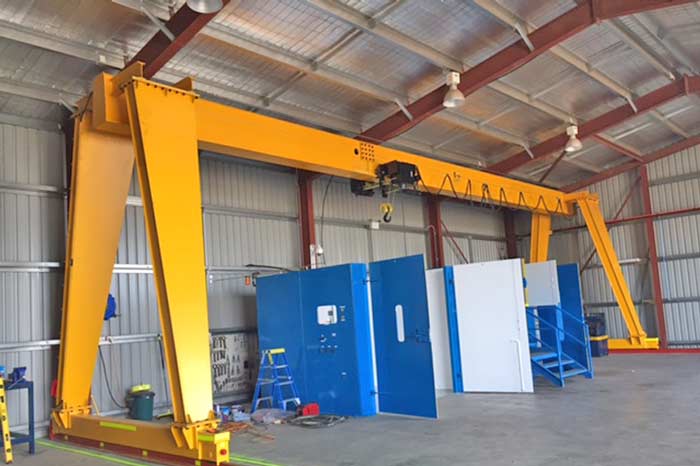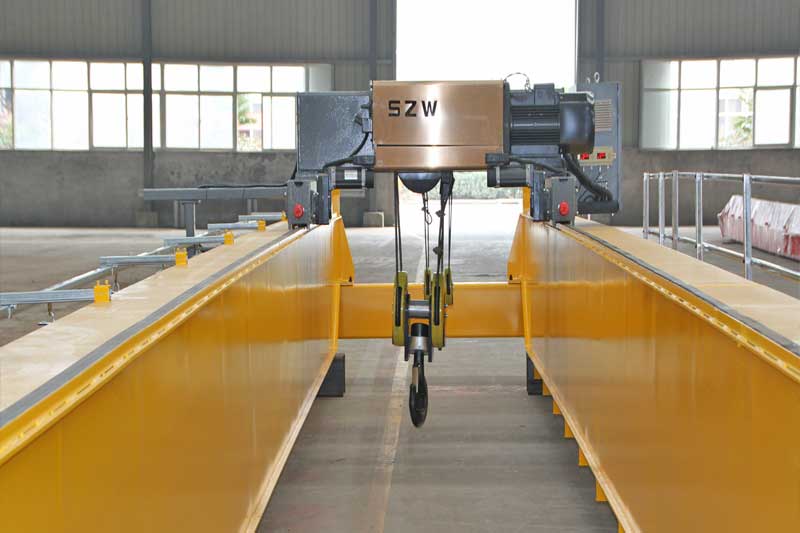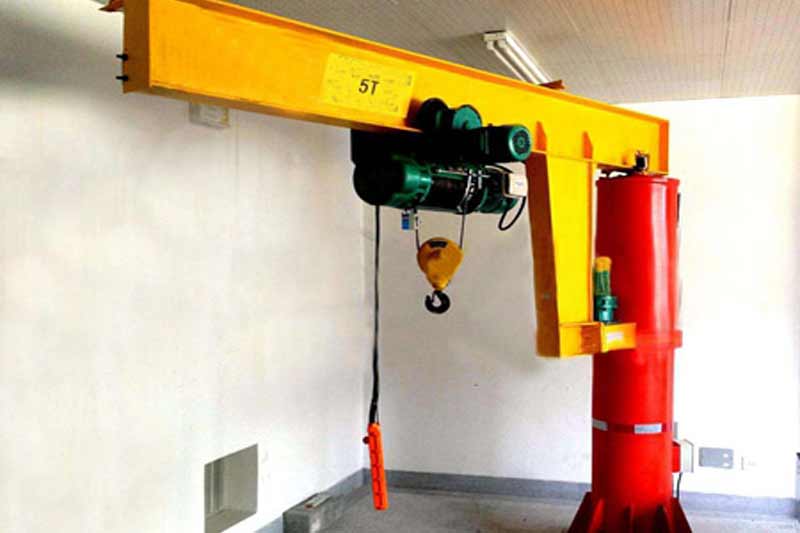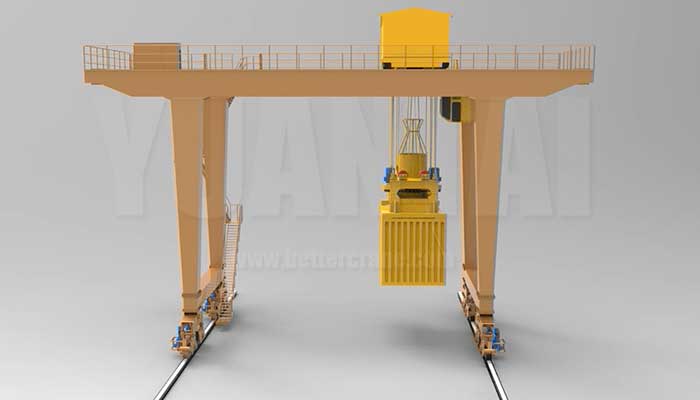Custom Industrial Overhead Cranes for Every Stage in Oil Refinery Facilities
Overview of Oil Refinery Facilities
Oil refinery facilities are complex industrial plants designed to process crude oil into various refined products such as fuels, chemicals, and other essential materials. These facilities are equipped with a range of processing units including distillation columns, reactors, and treatment systems. Each unit plays a crucial role in breaking down and transforming raw crude oil into valuable finished products. The refinery process involves several stages, from the initial handling of raw materials to the final packaging and distribution of refined products.
Importance of Cranes in the Refinery Process
Cranes are indispensable in oil refinery facilities, facilitating the movement of heavy and bulky materials throughout the plant. They are used at every stage of the refining process, from unloading raw materials to handling intermediate products and packaging finished goods. The versatility of cranes helps in efficiently managing the large volumes and weights of materials involved, ensuring smooth operations and minimizing downtime. By providing precise control and heavy lifting capabilities, cranes support the safe and efficient functioning of refinery operations.
Purpose and Scope of the Article
This article explores the critical role of cranes in oil refinery facilities, detailing the types of cranes used at each stage of the refining process. We will cover how different cranes are employed in handling raw materials, processing and refinement, storage of intermediate products, and final product packaging and shipping. The goal is to provide a comprehensive understanding of the crane systems used in refineries, highlighting their specific applications and benefits. This insight will help refinery operators and engineers make informed decisions about crane selection and maintenance, ultimately improving operational efficiency and safety in their facilities.
Receiving and Handling Raw Materials
Types of Raw Materials in Oil Refining
Crude Oil
Crude oil is the primary raw material in oil refining. It arrives at the refinery in large quantities and must be carefully managed throughout the facility. Handling crude oil involves transferring it from transport vessels, such as tankers or pipelines, to storage tanks and processing units. This process requires robust and reliable crane systems to handle the heavy and often volatile nature of the material.
Chemical Additives
Chemical additives are used to enhance the refining process and improve the quality of the final products. These additives can include catalysts, solvents, and other chemical compounds. They are typically delivered in bulk or in large containers and must be accurately and safely moved to various parts of the refinery. Proper handling is essential to prevent contamination and ensure the effectiveness of the additives.
Other Bulk Materials
In addition to crude oil and chemical additives, refineries handle a variety of other bulk materials, such as catalysts for chemical reactions and filtration materials. These materials are often stored in large bags or containers and need to be moved efficiently to the appropriate processing areas.
Cranes Used in Raw Material Handling
Features and Benefits
Gantry cranes are highly effective for handling raw materials due to their ability to span large areas and move heavy loads. They consist of a bridge supported by two or more legs, which can move along tracks. This design allows gantry cranes to cover extensive storage areas and transport materials with precision. Their robust construction makes them suitable for lifting and moving heavy raw materials like crude oil and large containers of additives.
Typical Applications
Gantry cranes are commonly used in the unloading and initial storage of crude oil and other bulk materials. They are also employed in the transfer of materials between different storage areas and processing units. Their ability to handle large volumes and weights makes them ideal for operations where heavy lifting and horizontal movement are required.
Design Variations
Overhead cranes, also known as bridge cranes, are designed with a bridge that runs along two parallel tracks, allowing the crane to move materials across a wide area. They come in various designs, including single-girder and double-girder configurations. Single-girder cranes are typically used for lighter loads and smaller spans, while double-girder cranes are suited for heavier loads and longer spans.
Load Capacities
Overhead cranes can handle a wide range of load capacities, from a few tons to several hundred tons, depending on their design. In the context of oil refineries, these cranes are used to lift and transport large containers of chemical additives, as well as to move equipment and materials within the processing areas. Their load capacity ensures that they can manage the substantial weights of the materials involved.
Advantages in Raw Material Handling
Jib cranes are versatile and compact, making them ideal for handling raw materials in confined spaces. They consist of a horizontal jib that extends from a fixed vertical mast, allowing the crane to pivot and lift materials within a specific radius. This design is particularly useful for loading and unloading materials in smaller storage areas or near processing equipment.
Operational Efficiency
Jib cranes offer high operational efficiency due to their ability to quickly and precisely position materials. They are well-suited for tasks such as loading chemical additives into processing units or moving smaller quantities of raw materials within the refinery. Their flexibility and ease of use contribute to streamlined operations and reduced handling times, enhancing overall productivity in the raw material handling process.
Processing and Refinement Stages
Key Processing Stages
Distillation
Distillation is the first major processing stage in an oil refinery, where crude oil is heated and separated into various fractions based on their boiling points. This process occurs in large distillation columns or towers. Cranes are essential in this stage for handling and positioning large and heavy components such as distillation columns, trays, and other equipment involved in the separation process.
Conversion
In the conversion stage, the separated fractions undergo chemical processes to convert them into more valuable products. This includes processes like catalytic cracking, hydrocracking, and reforming. These operations often involve complex equipment and catalysts, requiring cranes to move and position heavy reactors, catalyst beds, and other critical components efficiently.
Treatment
Treatment involves refining the converted products to remove impurities and meet quality specifications. This stage includes processes such as hydrotreating and desulfurization. Cranes are used to handle and position equipment such as pressure vessels, filters, and reactors, ensuring that the treatment processes are carried out smoothly and effectively.
Cranes for Processing and Refinement
Semi-Gantry Cranes
Specifications and Capacities
Semi-gantry cranes combine features of both gantry and overhead cranes, providing flexibility and strength. They typically have one fixed leg and one that moves along a track, allowing them to cover a large area with a high lifting capacity. These cranes can handle loads ranging from 5 to 50 tons or more, depending on their design and configuration.
Role in Processing Units
In processing units, semi-gantry cranes are valuable for lifting and positioning heavy equipment such as reactors, heat exchangers, and large pressure vessels. Their ability to move loads across a wide area while remaining stable makes them ideal for handling complex equipment involved in the conversion and treatment stages.
Electric Overhead Travelling (EOT) Cranes
Features for Precision Handling
Electric Overhead Travelling (EOT) cranes are equipped with electric hoists that provide precise control over load positioning. They are designed with a bridge that runs along two parallel tracks, enabling them to move loads horizontally across the workspace. EOT cranes are known for their accuracy and efficiency, essential for handling delicate or critical equipment.
Application in Distillation Columns
EOT cranes are particularly useful in the distillation stage for installing and maintaining distillation columns. Their precision and ability to handle large, heavy loads make them suitable for lifting and positioning columns into place, as well as for ongoing maintenance tasks that require exact placement and handling.
Portal Cranes
Benefits in Large-Scale Processing
Portal cranes, also known as container cranes, are ideal for large-scale processing operations due to their ability to span extensive areas and handle heavy loads. They are equipped with a high lifting capacity and can cover wide distances, making them suitable for large refineries where space and load handling capabilities are critical.
Handling Equipment and Components
In large-scale processing areas, portal cranes are used to move and position heavy equipment such as large reactors, storage tanks, and other components involved in the conversion and treatment stages. Their robust design and ability to handle substantial weights contribute to efficient and effective operations in expansive refinery environments.
Storage and Handling of Intermediate Products
Intermediate Products in Refining
Fuels
Intermediate fuels are by-products of the refining process that are not yet ready for final distribution. These include various grades of gasoline, diesel, and other fuel blends that may require further processing or blending. Proper storage and handling are crucial to maintaining product quality and ensuring efficient distribution.
Chemical Products
Refineries also produce a range of chemical products such as solvents, lubricants, and additives. These chemicals often require careful handling and precise storage conditions to preserve their integrity and prevent contamination. Intermediate chemical products are typically stored in bulk containers or tanks and need to be efficiently managed to ensure they are available for further processing or shipment.
Cranes for Storage and Handling
Double-Girder Overhead Cranes
Handling Bulk Intermediate Products
Double-girder overhead cranes are ideal for handling bulk intermediate products due to their high lifting capacities and wide span capabilities. These cranes feature two parallel girders that support the hoist and trolley, allowing them to lift and transport heavy loads with ease. Their robust design makes them suitable for handling large volumes of fuels and chemical products stored in bulk containers.
Design and Efficiency
The design of double-girder overhead cranes provides superior strength and stability, enabling them to handle heavy and bulky intermediate products efficiently. They are equipped with powerful hoists and are capable of covering long spans, which is essential for moving large containers or tanks of intermediate products. Their efficiency in handling and transporting materials helps streamline storage operations and optimize workflow.
Suitable for Storage and Transport
Container cranes, also known as gantry cranes, are well-suited for handling intermediate products stored in containers. These cranes are designed to lift and transport containers with ease, making them ideal for managing chemical products and fuels that are stored in standard or custom containers. Their ability to handle various container sizes and weights makes them versatile for different storage needs.
Typical Configurations
Container cranes typically feature a gantry structure with adjustable spreaders to accommodate different container types. They can be configured with various lifting capacities and spans to meet the specific requirements of the storage area. Their design allows for efficient loading and unloading of containers, facilitating smooth operations in the storage and handling of intermediate products.
Final Product Packaging and Shipping
Types of Finished Products
Refined Fuels
Refined fuels are the primary products of an oil refinery, including gasoline, diesel, jet fuel, and other fuel types. These products are typically packaged in large quantities for distribution. Efficient handling and packaging are crucial to maintaining the quality and safety of the fuels, which must meet stringent industry standards and regulations.
Chemical Products
Chemical products produced in refineries include a range of specialized substances such as lubricants, additives, solvents, and other chemicals. These products are often packaged in various forms, such as drums, barrels, or bulk containers, and must be carefully handled to avoid contamination and ensure proper labeling and safety.
Cranes for Packaging and Shipping
High-Capacity Gantry Cranes
Features for Large-Scale Packaging
High-capacity gantry cranes are designed to handle the heavy lifting required for large-scale packaging operations. These cranes have a robust structure with high lifting capacities and wide spans, making them ideal for managing bulk packaging and handling large containers of finished products. Their ability to cover large areas and move heavy loads efficiently supports high-volume packaging operations.
Handling of Finished Products
In packaging and shipping areas, high-capacity gantry cranes are used to move and position finished products, such as large containers of refined fuels and chemical products. Their strength and reach facilitate the smooth transfer of products from packaging lines to storage areas or directly to shipping points, ensuring that operations are carried out efficiently and safely.
Overhead Cranes with Specialized Attachments
Attachments for Packaging
Overhead cranes equipped with specialized attachments, such as clamshell buckets or pallet forks, enhance their versatility in packaging operations. These attachments enable cranes to handle different types of packaging materials and products, including drums, barrels, and bulk containers. The use of specialized attachments improves the efficiency of packaging processes by providing tailored solutions for various handling tasks.
Enhancing Efficiency
Specialized attachments for overhead cranes contribute to increased operational efficiency by streamlining the handling and packaging of finished products. They allow for quick and precise movement of goods, reducing handling times and minimizing the risk of damage. The adaptability of these attachments makes them suitable for a wide range of packaging needs in the refinery.
Articulating Cranes
Flexibility in Packaging Areas
Articulating cranes, also known as knuckle boom cranes, offer exceptional flexibility and maneuverability, making them ideal for use in packaging areas with limited space. Their articulated arms allow them to reach around obstacles and handle products in tight or confined areas. This flexibility is especially useful in complex packaging operations where space constraints are a concern.
Versatility and Safety
Articulating cranes are versatile tools that can handle a variety of packaging tasks, from placing products into containers to arranging packaged goods for shipping. Their design enhances safety by providing precise control over load positioning and reducing the risk of accidents in busy packaging environments. By combining versatility with safety features, articulating cranes support efficient and secure packaging operations.
Maintenance and Safety Considerations
Regular Maintenance Practices
Ensuring Crane Reliability
Regular maintenance is crucial to ensuring the reliability and longevity of cranes in an oil refinery facility. This includes routine inspections, servicing, and repairs to keep the cranes operating smoothly and prevent unexpected breakdowns. Key aspects of maintenance involve checking mechanical components, hydraulic systems, electrical systems, and safety devices. Regular maintenance helps to identify potential issues before they escalate into major problems, ensuring that cranes perform efficiently and safely.
Common Maintenance Issues
Common maintenance issues with cranes include wear and tear on moving parts, hydraulic leaks, electrical malfunctions, and structural fatigue. For example, hoists and winches may require periodic lubrication and adjustment to maintain optimal performance. Hydraulic systems need to be checked for leaks and proper fluid levels. Electrical systems should be inspected for signs of wear or damage. Addressing these issues promptly can prevent costly downtime and ensure the safe operation of cranes.
Safety Standards and Protocols
Compliance with Industry Regulations
Compliance with industry safety regulations is essential for preventing accidents and ensuring safe crane operations. Oil refineries must adhere to standards set by organizations such as the Occupational Safety and Health Administration (OSHA) and the American National Standards Institute (ANSI). These regulations cover various aspects of crane operation, including load capacities, operational procedures, and safety equipment. Regular audits and inspections help to ensure that cranes and their operators meet these regulatory requirements.
Safety Training and Procedures
Proper safety training for crane operators and maintenance personnel is vital for maintaining a safe working environment. Training programs should cover crane operation procedures, emergency response protocols, and safety equipment usage. Operators should be familiar with the crane’s controls, load limits, and operational hazards. Establishing clear safety procedures and conducting regular drills can help prepare personnel for emergencies and reinforce safe practices. Ongoing training and adherence to safety protocols reduce the risk of accidents and contribute to a safer and more efficient workplace.
Conclusion
Summary of Crane Types and Their Roles
In oil refinery facilities, cranes play a vital role in the efficient handling and processing of materials throughout various stages. From receiving and handling raw materials to the storage, packaging, and shipping of finished products, different types of cranes are employed to address specific operational needs. Gantry cranes and overhead cranes are crucial for handling bulk materials and large equipment, while jib cranes provide flexibility in confined spaces. For processing and refinement, semi-gantry cranes, EOT cranes, and portal cranes offer the necessary capacity and precision. In the packaging and shipping stages, high-capacity gantry cranes, overhead cranes with specialized attachments, and articulating cranes enhance operational efficiency and safety.
Importance of Choosing the Right Crane for Each Stage
Selecting the appropriate crane for each stage of the refining process is essential for optimizing performance and ensuring safety. Each type of crane is designed with specific features to handle different weights, sizes, and types of materials. By choosing the right crane, refineries can improve handling efficiency, reduce downtime, and minimize the risk of accidents. Proper crane selection also contributes to maintaining product quality and ensuring smooth operation across the facility.
Future Trends and Innovations in Crane Technology for Oil Refineries
The future of crane technology in oil refineries is likely to be shaped by advancements in automation, smart technology, and enhanced safety features. Innovations such as automated crane systems, remote operation capabilities, and real-time monitoring can further increase efficiency and safety. The integration of sensors and data analytics will enable predictive maintenance, reducing unexpected downtime and improving overall crane performance. As refineries continue to evolve, adopting these advanced technologies will be crucial for staying competitive and ensuring optimal operations in the dynamic environment of oil refining.








